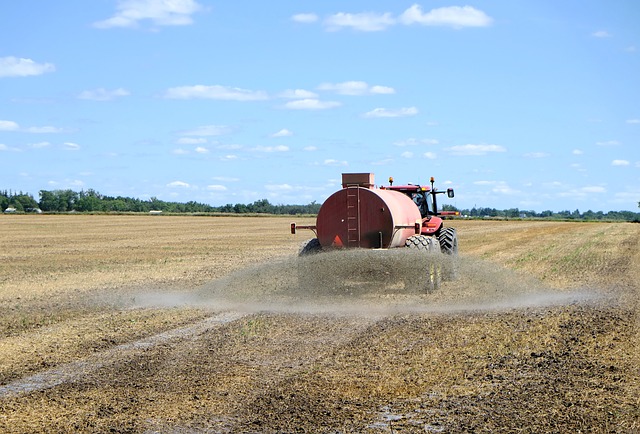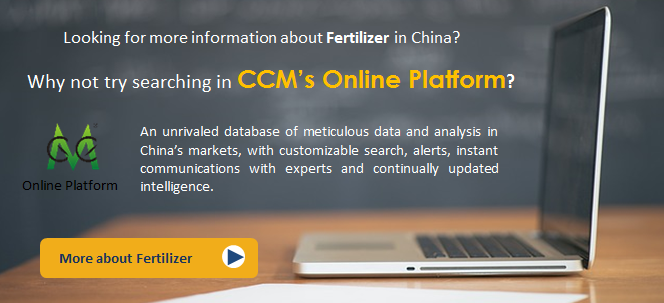According to the analysis of CCM, the price
of fertilisers will hit the bottom soon and rebound to a higher grade in 2017
again. The main reason is a declining output of phosphate fertilisers and the
end of the El Nino phenomenon.
The fertiliser market in China endured many
negative impacts during 2016. These consist of falling prices of agricultural
products, less demand, both oversea and domestic, a slow reducing of the high
inventory, declining operating rates with the corresponding smaller profit margin,
and a relatively low total value of the export business.

Source: Pixabay
The mood of the attendees at the China
Phosphate Fertiliser & Compound Fertiliser Exhibition on November 4, 2016,
in Nanjin City was correspondingly pessimistic. The main concerns for the
producers of fertilisers are the missing orders for the traditional winter
stockpiling and rising raw material prices with little chance of rising the
fertiliser price as well. The exhibition itself was the largest one in its
history, with more than 40,000 attendees and over 240 exhibitors.
The price of phosphate fertiliser is
usually increasing in November, due to the winter stockpiling season and the
resulting rising demand. However, this year distributors are still waiting for
the stockpile orders to take action, because they are waiting for likely
decreasing fertiliser prices or even don't plan to stockpile at all. This led
to a sales volume of fertilisers for winter stockpiling of only 20% to 30%
compared to the same time in last year.
The winter stockpile usually is necessary
to face the high demand of fertilisers in spring. Many distributors plan to do
no stockpiling this year, because of the overcapacity of fertilisers in
general, which may keep the price for fertilisers low, even in the heat time of
spring. Mai Biyu, the general manager of Guangzhou Fenji Agricultural Means of
Production, revealed to CCM, that the price of stockpiling fertiliser for
winter may decrease and it will be hard for the fertiliser price to go up if
the downstream demand isn't strong the coming spring.
The new strategy of the distributor
including a flexible buying of fertilisers on demand rather than keeping a high
inventory has a massive impact on China's fertiliser producers. It will put
high pressure on the operating schedule and leads to an adaptation of any
production plans made before.
The main raw materials for the phosphate
fertiliser production are yellow phosphorus and sulphur. The prices of these
upstream products are rising since October 2016. Normally, the price of fertilisers
would increase according to this trend. This year, however, the huge oversupply
of fertilisers makes it very difficult for manufacturers to raise the prices.
Increasing raw material costs, compared to
low fertiliser prices will lead inevitable to lower profit margins of many
producers. This effect has already led several small and medium-sized
manufacturers to change their raw materials to cheaper, low-quality products.
The price of overall phosphate fertilisers will be again affected by those low-end
products, according to CCM.

What's more, the high inventories of
Chinese enterprises are the result of an overall decreasing export trend in
2016。 The export volume of phosphate fertilisers and
compound fertilisers was falling 28.9%, compared to last year. The total amount
was only 3 million tonnes, according to China Customs.
Nevertheless, regarding all the negative
trends for phosphate fertilisers in China, CCM's analysts are predicting, that
the bottom of the price fall is reached soon and the increase of price will
follow promptly.
The first reason is a reduced output, that
is likely to happen, looking at the huge inventories that are already existing
and the pollution control in northern China, which orders several phosphate
producers to lower their production in terms of stricter environmental
policies.
Also, the El Nino weather phenomenon has
ended, which will increase agricultural products demand in Africa and South
America again. El Nino occurs every
three to seven years in different intensity. The recent El Nino was one of the
strongest phenomena by now.
Due to typhoons in Southeast Asia and
droughts in Africa, caused by El Nino, the end of this phenomenon will increase
the agricultural production and output of affected countries again, which leads
to a higher demand for phosphate fertilisers.
About CCM:
CCM is the leading market intelligence
provider for China's agriculture, chemicals, food & ingredients and life
science markets.
Do you want to find out more about the phosphor market in China? Join our professional online platform today and get
insights in Reports, Newsletter, and Market Data at one place. For more trade
information on fertilisers visit our experts in trade analysis to get your
answers today.
Tags: Fertilizer, Phosphorus chemicals